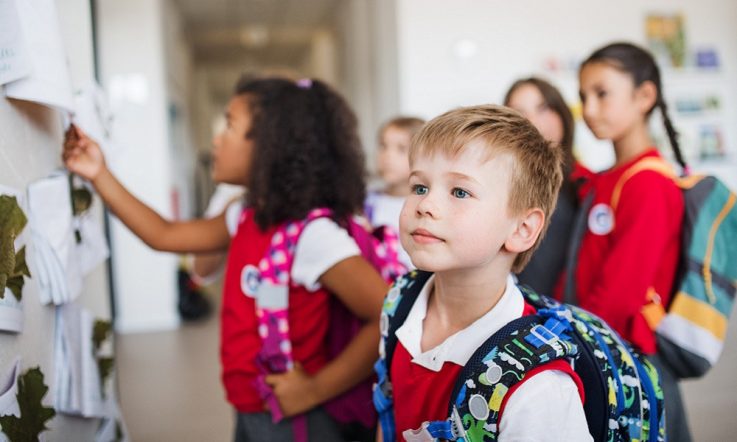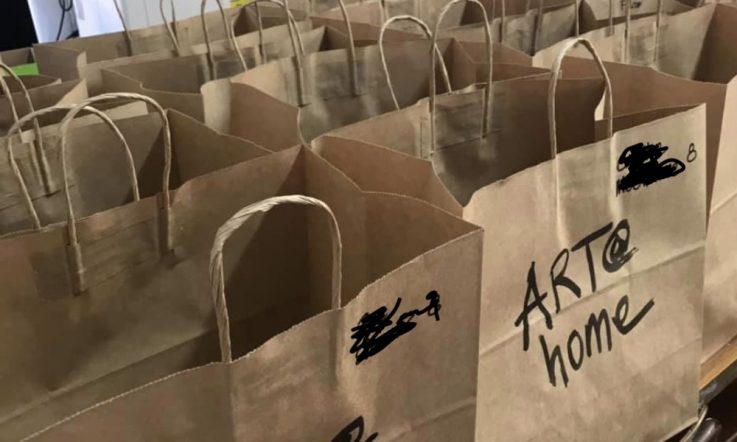As educators in Australia return to face-to-face teaching, and schools around the world grapple with new ways of working to provide continuing support to students during the pandemic restrictions, readers have been getting in touch to tell us what's been happening in their own context. This week, Teacher is sharing some of those stories. In this second article, Kate Hill – an Australian teacher from Melbourne currently teaching Year 7 and 8 English at Braeburn School in Nairobi, Kenya – gives an international perspective.
‘Responses to the COVID-19 crisis will vary depending on every education system's capacity. …The response is likely to expose deep education inequalities, including within a country's education system.' (Martinez, 2020).
International schools face a unique set of challenges during this time of remote teaching and learning. At Braeburn – a co-educational international school offering British/International curricula, in Nairobi, Kenya – some expatriate staff, students and their families have departed for their home countries, and are operating on different time zones. As I write this, some local teaching staff have also departed for their family homes in rural Kenya and are now locked out of the city due to inter-county restrictions. Some staff don't have access to internet or personal devices such as laptops, from which to ensure their ability to teach at this time. Braeburn is responding to, and overcoming, these obstacles in a number of ways.
School laptops and devices are being loaned out to teachers and internet data is provided where needed; frequent, tailored professional development is being implemented both formally and informally; and staff, student and parent surveys are being distributed to help us reflect and build on our practice. Approximately 60-70 per cent of Year 7 and 8 parents reported that their child is coping well with the demands of remote learning. Further, almost 60 per cent of parents ‘agree', and 25-35 per cent ‘strongly agree', that their child is usually able to work independent of adult help. However, approximately 5 per cent of parents across the two year groups ‘disagree' that their child is able to work independently of adult help at home.
Supporting students with additional needs
What is perhaps most evident from the feedback, is that children with additional needs are facing the most challenges. Braeburn's Inclusion Leader Ana Low says that: ‘Despite many of our students being able to access the technology, active participation with teachers and peers is really how many learn best.' She reports that organisational skills, access to content, and social isolation are some of the challenges our students are facing. Having to manage new timetables, deadlines and submitting work for different tasks can be trying. She adds that ‘having to read instructions if you have difficulties with reading, means that accessing content can also be a problem. This can either be due to decoding or comprehension issues.' Remote Teaching and Learning (RTL) also means that learners have no access to peers that help to scaffold their learning, serve as a source of extrinsic motivation and generally contribute to their wellbeing.
What's working for our students?
Live video meets provide an opportunity for student-teacher interaction, and mean explanation and reassurance can be provided clearly, and multiple times if required. Visual resources are also proving successful, for example where students can watch a video of the concept. They can watch it as many times as they like, and also press pause to reflect, question their understanding, and make notes. We've found that self-paced learning like this also minimises the social stress of having to ‘keep up' with the rest of a class. Teachers have noted that RTL means there are far less social distractions, and that some students, including those with additional needs, have reported being able to focus on their work more than they would normally do in class. Manipulatives (hands-on resources and websites that offer the chance to move things around on the screen) are also acting as useful visual tools.
Challenges for teachers and what's working
Educators have also been faced with a steep learning curve. We are trialling many new platforms and apps at a rapid pace, finding ways to differentiate online work and engage students – particularly those that struggle to sit and focus. Not being in the same location has also been a challenge. One support teacher has reported that ‘trying to manage some subjects like Art, Music and IT, is crazy! I'm not in class with the teacher, so don't have subject guidance, and these are not my speciality areas.'
Ms Low says: ‘The sharing of resources and tried and tested tips and tricks amongst colleagues, is helping guide our practice.' Further, student feedback around not just what is working but what is fun and engaging, is also crucial. Kahoot Live and live Google Meet scavenger hunt starters are some of the activities students have reported to be most enjoyable. Additionally, teachers are developing new skills and trying new things every day – which can create frustration when things don't work, yet also provide invaluable opportunities for professional development. Ensuring all support teachers have been added to each Google Classroom for that student, for all subjects, is also helping to maintain parallel teaching.
Challenges for parents and what's working
Across the school, it is evident that parents are struggling to provide support for their children due to insufficient time, managing their own work online and the sometimes day-long challenging behaviours of their children, which may be heightened due to the setup of online learning. Ms Low reports that many parents do not feel equipped to support their children academically, and state: ‘We are not teachers.'
Parents report that having direct contact with the Inclusion Leader in addressing their challenges at home is helping. Key Stage Three (Year 7 and 8) school surveys also reflect aspects that are working well in remote learning. These are: interaction with teachers; timely feedback; the social connection enabled by Live Meets; one-to-one teacher support for students through individual or small group Meets; and well-structured and engaging lessons. Ms Low notes that: ‘A positive outcome is that parents are becoming more aware of some of the challenges their children face with learning, and this can lead to more understanding, awareness and acceptance.'
Not all schools in Kenya are able to ensure provision in the same way as Braeburn, however. Discussions with a fellow classroom teacher at a neighbouring local school highlight the divide that exists. Head of Curriculum Pontianeus Amukanga tells me that most families at his school do not have devices or internet with which to access online learning for their children. ‘We are rolling out instructions through Whatsapp, but many parents do not have data or smartphones and therefore cannot access what we are trying to provide,' he says. He adds many parents lack confidence in supporting the learning of their children. As a teacher, he says ‘trying to meet the needs of students and families at this time is a very stressful, and seemingly impossible task.'
Stay tuned for tomorrow's final instalment, written by Michael Rosenbrock – Assistant Principal at Wodonga Senior Secondary College, in regional Victoria on the Murray River border with New South Wales.
References
Martinez, E. (2020, March 19). Pandemic shakes world's education system. Human Rights Watch https://www.hrw.org/news/2020/03/19/pandemic-shakes-worlds-education-systems
This school has gathered feedback from staff, students and parents to help teachers reflect and build on their practice during the restrictions.
How are you communicating with students, parents and colleagues? How does this feedback inform your own planning and practice?



